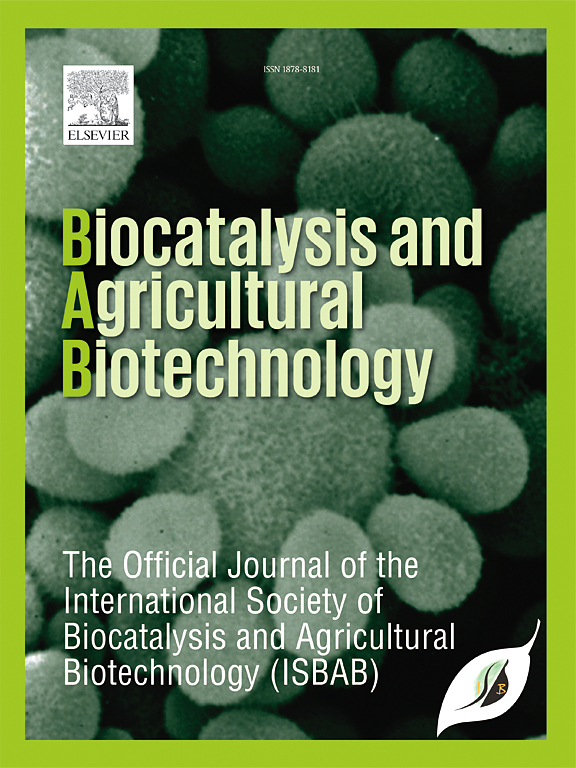Cytotoxic evaluation of Cissus rotundifolia against four cancer cell lines and its phytochemical analysis by LC-MS/MS and GC-MS
IF 3.4
Q2 BIOTECHNOLOGY & APPLIED MICROBIOLOGY
引用次数: 0
Abstract
Cissus rotundifolia has demonstrated a broad spectrum of biological activities and has been traditionally used in the treatment of several diseases. The cytotoxic effect of the Cissus rotundifolia grown in Saudia Arabia was evaluated against four human cancer cell lines; PACA2 (pancreatic), A549 (lung) line, SKOV3 (human ovarian) and HL-60 (leukemia). Both the ethanol extract and ethyl acetate fraction showed moderate activity against PACA2 with IC50 values of 51.3 μg/ml and 57.9 μg/ml respectively. While the cytotoxic activity against SKOV3 was lower, with IC50 values of 82.1 μg/ml and 77.9 μg/ml respectively. The ethyl acetate fraction exhibited significant activity against HL-60 cell line, with IC50 value of 54.3 μg/ml. On the other hand, the n-hexane fraction showed moderate cytotoxicity against leukemia HL-60 with IC50 value of 75.8 μg/ml, and lower activity against PACA2, while no activity was detected against SKOV3. Additionally, there was no detected activity of any of the tested fractions against A549 cell line. A phytochemical analysis was performed on both ethyl acetate and n-hexane fractions. The ethyl acetate fraction analysis was performed using liquid chromatography coupled with tandem mass spectrometry (LC-MS/MS) revealing the presence of 16 metabolites with flavonoids as major metabolites. While the analysis of n-hexane fraction was performed by gas liquid chromatography coupled with mass spectrometry (GC-MS) revealing the presence of 26 compounds, with phytol and β-sitosterol as major compounds. The present study shows that C. rotundifolia and its fractions could contribute to pharmaceutical industries for the treatment of leukemia and pancreatic cancers.
求助全文
约1分钟内获得全文
求助全文
来源期刊

Biocatalysis and agricultural biotechnology
Agricultural and Biological Sciences-Agronomy and Crop Science
CiteScore
7.70
自引率
2.50%
发文量
308
审稿时长
48 days
期刊介绍:
Biocatalysis and Agricultural Biotechnology is the official journal of the International Society of Biocatalysis and Agricultural Biotechnology (ISBAB). The journal publishes high quality articles especially in the science and technology of biocatalysis, bioprocesses, agricultural biotechnology, biomedical biotechnology, and, if appropriate, from other related areas of biotechnology. The journal will publish peer-reviewed basic and applied research papers, authoritative reviews, and feature articles. The scope of the journal encompasses the research, industrial, and commercial aspects of biotechnology, including the areas of: biocatalysis; bioprocesses; food and agriculture; genetic engineering; molecular biology; healthcare and pharmaceuticals; biofuels; genomics; nanotechnology; environment and biodiversity; and bioremediation.
 求助内容:
求助内容: 应助结果提醒方式:
应助结果提醒方式:


